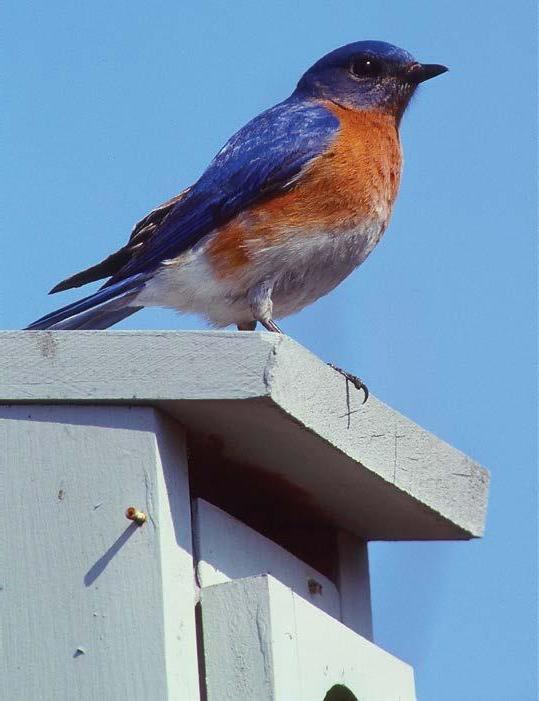
13 minute read
Tales from Shawangunk, Part 76
TALES FROM SHAWANGUNK
Chapter 76
Advertisement
by Peggy Spencer Behrendt

Preplanning Provides Peace of Mind
Family Monuments Granite Cleaning & Repairs Cemetery Lettering Pre-Need Memorials
Memories of sunshine and flowers in Florida last winter. Tim and Peggy decided to winter at Shawangunk this winter because of COVID-19


Prince-Boyd & Hyatt
Home For Funerals, Inc.
Home-like surroundings for your convenience & comfort.
Pre-arrangement Plans with prey-payment or no payment options. 210 West Court St. Rome • 336-1510
In 1974, Tim and Peggy Spencer Behrendt set off on an adventure. They began a new life in the woods of Cold Brook, NY, without modern conveniences like electricity or indoor plumbing. These are excerpts and reflections from Peggy’s journal chronicling their adventures and also her childhood memories growing up in Westmoreland.
It’s March now in Shawangunk and the sun comes out after many days (maybe it’s been weeks?) of cloud cover. I feel like standing taller, lifting my arms to the golden light, and breathing more deeply. All the forest creatures and even the trees must feel the same way because as the winter weight of snow slides off weary evergreen branches,
Is it spring yet?!
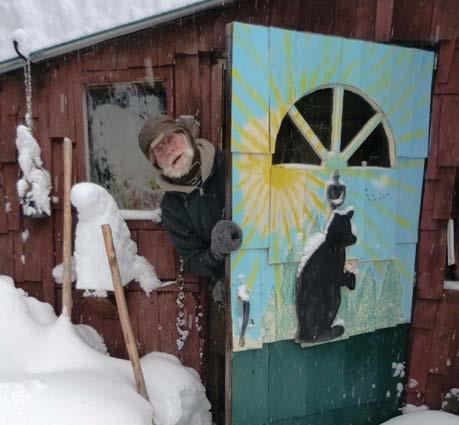
they, too, lift their arms, as hungry for sunlight as we are. Unlike the deciduous trees which must sprout leaves first, evergreens can immediately begin photosynthesis. The essential oils in their needles and bark act like antifreeze, so as soon as they get the least amount of sunlight, they are able and eager to make food and absorb carbon dioxide.
On our walks, we pass fields of receding snow quilts, now patterned by a winter’s accumulation of seed hulls, bark bits, and springtails. A subtle tinge of rose begins to blush within the dark stems of shrubby dogwood in the hedgerows, and the tiny buds of trees high above us also swell and redden, as nutritional sap begins to rise from underground root storage. According to Peter Wohlleben in The Hidden Life of Trees, scientists from three institutions listened closely with a stethoscope against maple trees during this process and registered a “soft murmur.”
I found this book fascinating, in that it offered not only recently discerned, scientifically-based information on the life of trees, but posed profound questions on which to contemplate. There is much we don’t know about what’s going on in our forest among these great beings and in the soil to which they cling. They are likely communicating with each other - perhaps through chemical transference, electrical pulses, or inaudible sound frequencies. Decision-making processes are occurring in the woody fibers and roots of these beings as they react to stimuli; water, sun, injuries, and competition, although it is immeasurably slower than animal reactions. Is this thinking? Is this feeling? Is memory stored in the cells? Such possibilities may seem ridiculously outrageous, even threatening anthropomorphisms (projecting human qualities on other life forms,) but why not? According to reliable scientific sources, all living things are remarkably similar at the cellular and molecular levels. Those of us who feel a strong connection to animals, trees, and plants are sensing this innate kinship.
As adolescents, my friend, Carol Ohmart Behan and I climbed an ancient maple tree outside her home in Stanwix and discussed this very topic. Intuitively, we both felt deeply connected to the tree we sat in and sensed sentience in its great, woody presence that was comforting. Tim and I feel likewise about every tree in our forest. To us, they are amiable companions, silent and ever-present entities sharing our life journeys in this little section of earth. Most of humanity is inextricably intertwined in the life cycle of trees because much of our homes are built of wood, and often heated by wood, coal, and oil which are ancient remains of forests and plants long past.
We can gather some of the sap of maple trees without causing irreparable harm to them. Many



Featuring: American Made & Amish Made Furniture!
Fine furniture and flooring for people who love their homes.
Madison Collection
Route 5 , Sherrill 363-3131
Gael Audic sips birch sap
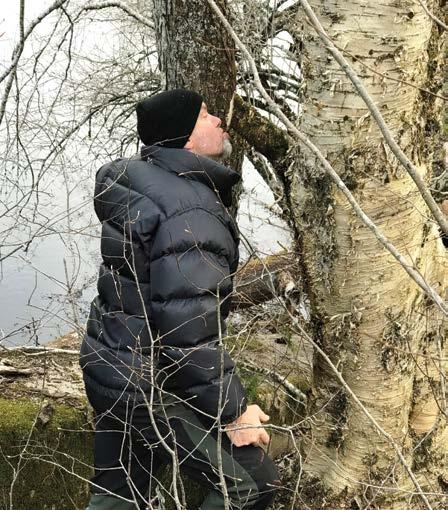
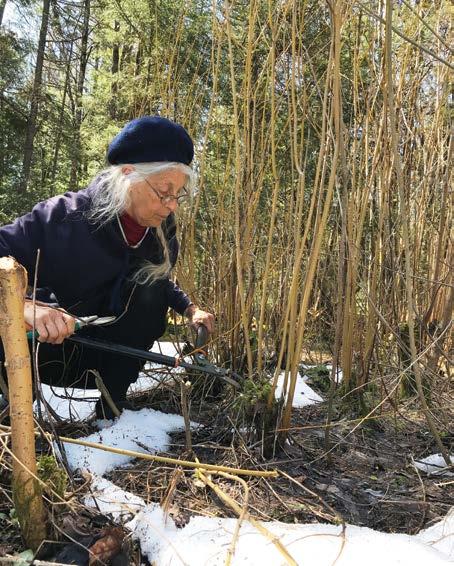
were, in fact, planted by our ancestors specifically for this crop. Our first attempt at maple sugaring was in the kitchen of the parsonage we lived in Peg prunes a new when we were first married basketry willow patch in 1974. Since it takes 40 gallons of hard maple tree sap to make 1 gallon of syrup, a lot of water must be boiled off. This vaporization created a veritable cloud in the upper half of the rooms throughout the historic building. We innocently found it quaintly interesting to walk through this fog until the wallpaper started peeling off and we saw water dripping off the wood cabinets. We had to do a lot of cleaning and mopping up, but we finally got a little syrup! It was such an event, we felt like there should have been a newspaper headline; “Tim & Peg Make a Cup of Maple Syrup!”
We also attempted it on the wood stove of our forest home thinking we’d get multiple uses out of the heat while letting the steam out of the loft window. But again, the cloud appeared, and books and bedding got soaked. Yes, maple sugaring is quite an energy-consuming, labor-intensive enterprise, so when we purchase or are gifted some maple syrup (which we use on waffles cooked on our antique, cast iron waffle iron for special holidays) we well appreciate and don’t object to the cost of this exquisite nectar.
Edna West Teall wrote about maple sugaring outdoors in the Adirondacks during the late 1800s.
“…someone would take a noon meal to the workers. The food could be heated by the blazing fire. We might go early and bake some potatoes in the coals or boil eggs in one of the kettles right along with the sap. We also cooked doughnuts in the boiling sap. It gave them – and the eggs – a delicious maple flavor.”
Once it began to thicken, the final sugaring-off was done on the kitchen stove; “…it was boiled and stirred with constant watching until it became soft sugar, full of grainy crystals you could scoop out of the containers when it cooled. This was the stage for ‘waxing.’ Take a cupful of the boiling mass, dash out to a convenient snowdrift, and spread it on. In a few minutes, it would have a caramel-like consistency that might stick your jaws together, but what a flavor; every chew suggested having still another chew.”
I recall hearing that the first settlers in the village of Barneveld were intent on maple syrup production for their livelihood, to the extent that long pipes or trenches made of wood were constructed to direct the dripping sap from the trees to a central collecting container. I imagine that constructing these and laying them out at an appropriate angle could have been a great challenge!
Now our participation in this marvelous commencement of spring

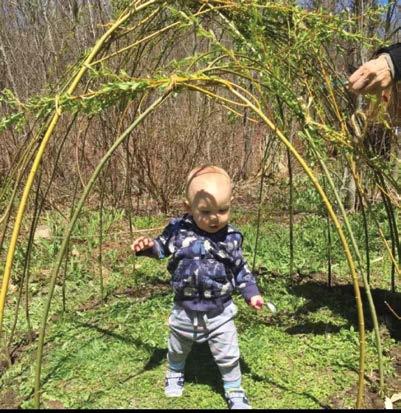

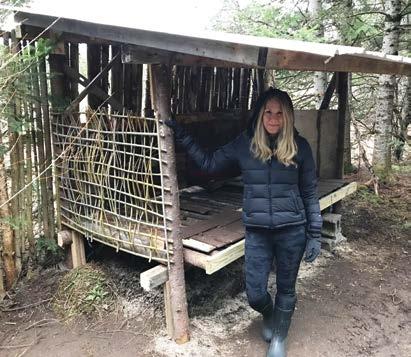
extends only to occasionally licking sap from the broken limb of a maple or birch tree. And it’s surprising to see above the great, lingering snow accumulations, how many winged bugs, even moths or butterflies will appear to savor this nutrient-rich ambrosia.
This reminds me that as spring advances, our time of respite from annoying bugs is drawing to a close. Of course, there are lingerers through the winter. An occasional mosquito benignly floats around inside, perhaps brought in on a piece of firewood and awakened by the heat. And sometimes I shudder to contemplate how many spiders there must be lurking under our cedar shakes to make all the dusty cobwebs I have to wash off each month...but can’t allow myself to dwell on it. It’s not that I’m denying reality, just choosing to ignore it.
One of the downsides of our winter camping experiences in Florida is that it thrusts us smack back into bug season. If I can get through our visit there without a fire-ant bite, I feel fortunate. There is usually a column of minuscule “sugar” ants parading on a wall in our camper that I don’t worry about too much, as long as I keep the tiny kitchen scrupulously clean of food particles and spray vinegar there daily. But sometimes, we see rather large, black ants pass through. I pick them up and throw them out the door.
One year, there were more than usual of these big black ants, and we were opening our door a lot to evict them, which then lets in mosquitoes and no-see-ums. So, we searched for cracks or holes in the old camper to close up, and even put sticky tanglefoot on the wheels and ground contacts. Still, they came. Until Rebekah Audic near a woodshed built of scrap wood and willows one day we discovered that the vent for the fridge was unscreened. Little August makes With great satisfaction, w e sure the willow hut is blocked it up. “This will definitely stop the del- big enough uge!” So we thought. With whisk
That evening, sitting on our bed/couch, I broom, dustpan, and brushed a couple of stray ants off our blanket. pieces of paper we scooped up Then a few more appeared. Annoyed, I brushed great clumps of ants and tossed them out the them onto the floor and looked down. Then, I door. It didn’t take long, and I decided not to almost screamed in horror! The floor was com- move into the tent. The next day, we realized we pletely black with a living, squirming mass of had closed off their exit, not their entrance! We those big, black ants, and they were crawling no longer had visits from them that year. up the walls! I drew my legs in and backed up. Last year in mid-March, we were still in “Tim! Look!” I could barely speak. Florida and the Coronavirus was just becoming a “What?” he absently replied as he was reading. crisis in our country. We felt confused about how “I’m moving into the tent!” I exclaimed louder serious it was and how to react to it. It was hard to and pointed. Then he took notice. “Where did find any masks to wear. We kept debating about they come from?” he exclaimed with almost as whether to come home early or not. I comforted much horror. “Let’s get them out!” myself and others by playing music. I wrote in my
Are you prepared for winter?
Generac whole house generators will keep you up and running during blustery weather. Call to schedule a free site inspection and estimate.


See us for the best prices & service in CNY!
Visit our large showroom in Deansboro
Gas inserts • Fireplaces (wood, coal, pellet, or gas) Stoves (wood, coal, pellet, or gas) • Furnaces (wood, coal, pellet, or gas) Hot water tanks • Water softeners • Space heaters Fire pits & patio furniture
All our products are installed and serviced by certified in-house technicians.
BUELL FUELS
Hearth & Home

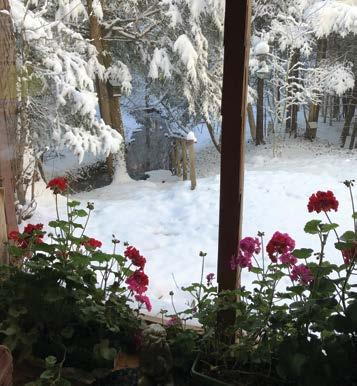
mize the production of unbranched shoots. Consequently, I had a lot of material not good for basketry so offered it Though we miss our Florida to the neighbors. gardens, we still have flowers One cut them into Summer Dream in our home at Shawankgunk 10” – 36” lengths Sylvia plays in a and stuck them in living willow hut the ground to grow jour- and create privacy nal: barri- ers, basketry material, “This and a living willow play hut for their young chilmorning, I watched for dren. Another neighbor weaved them into decwhen our French Canadian neighbors, Claude orative siding on a new scrap woodshed. I was and Julie were ready to head home, not know- happy it got used and fertilized my new bed right ing if, or when they’d be back. I pulled my harp away. For further information about such uses for out and played “Somewhere Over the Rainbow” willow, lookup “Living Willow Structures” by for them as Claude pulled their camper out. Julie my old willow basketry teacher, Bonnie Gale in came over, crying, and we waved goodbye. I felt Norwich. really sad, even though we didn’t get to know As soon as possible, we examined our garden them very well. I understand how the musicians fencing and made repairs. Last year, the garden on the Titanic may have felt as they continued gate needed replacing. For construction material, to play music while it was sinking. It gave them I raided Tim’s teepee of dead tree limbs ready to comfort, and comforted others.” be cut into firewood. We sometimes have little We did return early and got right back into debates about whether a piece of wood should homesteading by pollarding (pruning) my two- be saved for rustic construction or cut up for year-old basketry willow patch. This will opti- firewood. I confess to some hoarding and have a few secret stashes of rustic wood I’ve stolen from Tim’s woodpile. For those of us weary of winter (and the pandemic.) Tim writes:
The sky darkens, snow falls again staged with ice and chilled winds. Our hearts droop: ‘No, not again, won’t it ever stop? Too long, too much – I’m tired of it all!’
How can we not waste this precious day? If we hurry through these days - more pleasant times will also fly. If we find nothing here - there will be less there.
Spring will also have problems - new and demanding. Make this day, this moment count. Dream of tomorrow but remember dreaming is part of the fun of today. Complain and ventilate but balance it with the effort to create new meaning now.
Slow down, do less, rest, soon we will rise from our winter fatigue and mindset. And above all accept, accept, accept… •

The Shawangunk Nature Preserve is a deep ecology, forever wild, 501©(3), learning and cultural center. Tim and Peggy still live there and can be contacted through their website. www.shawangunknaturepreserve.com





Little Falls Little Falls Antique Center Antique Center
More than 50 vendors on 2 floors!
Antiques • Art • Crafts Open 6 days a week, 10-5, Closed Tues
March Madness!
Sales & Savings throughout!
Handicapped-accessible • 315-823-4309 Thruway Exit 29A, 25 West Mill St., Little Falls
www.littlefallsantiquecenter.com
Like us on Facebook!





